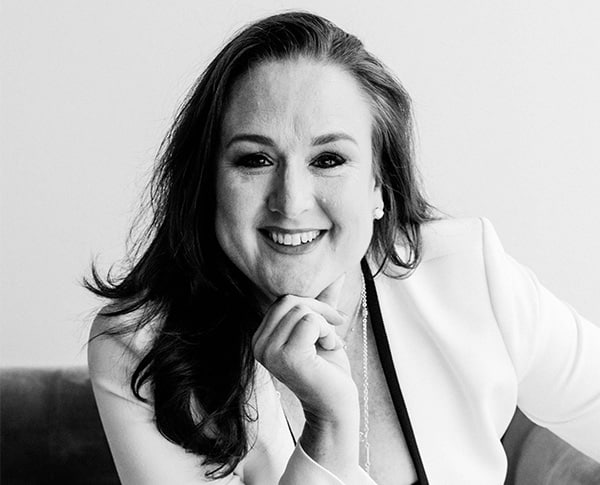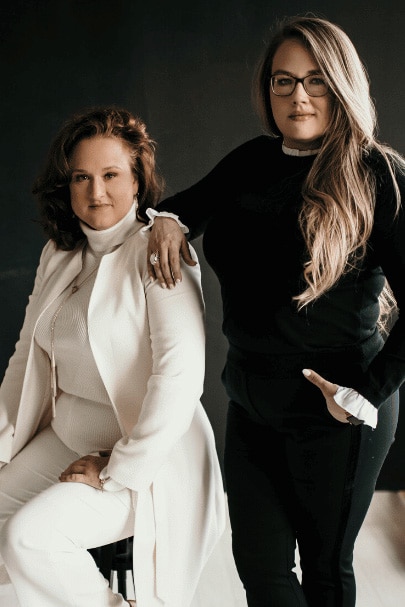Carter Law Group litigates product liability cases for one simple reason — to make the world safer. Our product liability attorneys are here for you.
Bad products endanger our community. Every day, dangerous and defective products injure someone, often catastrophically or fatally.
We measure our success not only by maximizing recovery for each of our clients, but also by the safety changes defendants implement as a result of our clients’ courage and our legal expertise.
You expect the products you buy to work effectively and to be safe to use. We expect the same thing. For the most part, companies agree—they want to earn and maintain consumer confidence, trust, and business. But, unfortunately, some companies only listen in the courtroom. We take those companies to the courtroom to deliver an important message: you are responsible for the injuries your bad products inflict.
Carter Law Group Fights For Product Liability Victims
The attorneys at Carter Law Group have decades of combined experience litigating cases against careless companies for manufacturing and distributing dangerous products.
This is a complex area of law, but it is one we have an expertise in and a passion for. Each bad product we hold companies accountable for helps make our communities safer for our clients, our children, our families, our friends, and our neighbors.
If a dangerous or defective product has injured you, contact Carter Law Group to talk to an attorney who will fight to both get you the recovery you deserve and make your world a little safer.
Please visit our Education and Resources page for additional information on product liability lawsuits and generally available causes of action, product recalls issued by the Food & Drug Administration and other reports on dangerous or defective products.
Product Liability Overview
The term “product liability” refers to the responsibility of any or all parties involved in the production of a product for any harm the product may have caused. This covers the distributor, retailer, maker of the assembled product (at the top of the supply chain), and manufacturer (at the bottom of the chain).
Product liability lawsuits would be brought against manufacturers of goods that have inherent flaws that damage consumers (or anyone else the product was lent, gifted, etc.).
Although most people consider items to be tangible personal property, product liability has expanded the definition of tangible personal property to encompass intangibles (such as gas), naturals (such as dogs), real estate (such as houses), and writings (i.e. navigational charts). Tort law serves as the primary source for product liability.
First-Pase Case (for the commercial seller of the defective product)
- The plaintiff uses a product that the defendant sells.
- The defendant sells the product commercially;
- The plaintiff sustains damage
- The product was flawed when the defendant sold it.
- flaw constituted a real and direct reason why the plaintiff suffered harm.
Different Product Liability Claim Types
Product liability cases may be based on strict liability, carelessness, or a breach of the fitness warranty. Since there is no federal product liability law, this will largely rely on the jurisdiction where the claim is situated. The US Department of Commerce published the Model Uniform Product Liability Act (MUPLA) in an effort to promote uniform practices for the products liability tort as a result of this lack of uniformity.
Defects That Make You Liable
There are three different product flaws for which suppliers and manufacturers are liable:
Design Errors
- Because they exist before the product is built, design flaws are intrinsic.
- Even if the item might do its job well, a design fault could make it too risky to use.
- To establish the existence of a design flaw, the plaintiff has the burden of proof in 47 states. However, the defendant in Alaska, California, and Hawaii must defend the product’s design to demonstrate why there wasn’t a flaw.
Errors in Manufacturing
- The product is constructed or produced with manufacturing flaws.
- In this instance, just a small number of the many products of the same type have flaws.
Marketing mistakes
- Marketing flaws include incorrect instructions and a failure to inform customers of hidden risks in the product.
Absolute Liability
Products In general, responsibility is viewed as a strict liability offense. In terms of products responsibility, regardless of the defendant’s intention, a defendant is liable if the plaintiff can demonstrate that the product is faulty. No matter how much care the maker or supplier took, if the product has a flaw that results in harm, they will be held responsible.
Defeating Liability Despite Defective Products
Some courts will utilize one of two standards to determine that the defendant has no culpability even when a product is flawed owing to a design flaw.
- The defendant is not liable for a design flaw if evidence demonstrates that the utility of the product outweighs its inherent risk of damage.
- Customer Expectation Test 1. When utilizing the goods in a reasonable manner, a reasonable consumer would find the product to be defective.
- Even though a product’s design flaw caused harm, the defendant is not responsible if a reasonable consumer would not find the product to be defective even while using it in a reasonable manner.
Liability for Products and Forums
Due to the numerous phases involved in a product’s manufacture and the consequently huge number of users, lawsuits involving products liability might involve defendants and plaintiffs from a wide range of jurisdictions. P
laintiffs frequently forum-shop to locate judges sympathetic to their claims because of the enormous number of parties that may be involved in products liability cases.
In Bristol-Myers Squibb Co. v. Superior Court of California (2017), the Supreme Court restricted plaintiffs’ power to choose the venue for their lawsuits involving defective products.
Carter Law Group Fights For Those Who Injured from Defective Products
Carter Law Group’s product liability team includes well-respected trial lawyers skilled in handling dangerous and defective product matters.
Carter Law Group realizes the importance of protecting and advancing the brand reputation for manufacturers and distributors.
The attorneys of this team have decades of experience representing manufacturers and distributors of various products in state and federal courts throughout the state of Texas and across the nation
Many of our attorneys have earned reputations throughout the industry as skilled practitioners who not only develop a deep knowledge of the product at issue but the overarching business concerns faced in any serious product liability claim.
Representative products defended by the attorneys on this team include the following:
- Automotive products/accessories
- Automated control systems
- Aviation accidents
- Recreational products (Personal Watercraft, Motorcycles, ATVs, UTVs)
- Consumer goods and appliances
- Hand and power tools
- Generators
- Heavy equipment (construction/industrial)
- Agricultural equipment
- Cranes, hoists, lifts
- Tires
- Medical products
- Recreational equipment (guns, sporting goods, etc.)
- Process control equipment
- Pressurized vessels
- Adhesives
- Building products
- HVAC equipment
- Propane/natural Gas equipment
Our Approach to Product Liability
Carter Law Group’s product liability attorneys are familiar with the latest strategies and methods used by opposing counsel and strive to minimize exposure through focused and purposeful discovery and negotiation.
The lawyers practicing in this area have acted as regional and national counsel for various product manufacturers, appearing as lead trial counsel and as coordinating discovery counsel for a variety of products.
Our Texas product liability attorneys are also frequently called upon to provide training to manufacturing clients on:
- Liability prevention strategies
- Warnings
- Other strategic issues
Our attorneys are known for their proactive advice and efforts to control spiraling costs. Building upon a nationwide network of counsel and proven expert witnesses, the attorneys in the product liability section at Carter Law Group provide skilled, effective, honest and loyal representation.
Manufacturing, Design, and Marketing Defects
If someone is injured by a defective product, they may have grounds to file a lawsuit against the manufacturer, wholesaler, or distributer, depending on the type of defect. The two primary categories of product defects under federal law are design defects and manufacturing defects.
Manufacturing Defects
These are caused by an error in assembly and are not intended to be part of the product. This type of defect will typically only be found in a small percentage of a company’s manufactured goods. Based on the theory of strict liability, a manufacturer is liable for any manufacturing defects that occur as a result of faulty construction, regardless of whether they took care throughout the manufacturing process.
The plaintiff needs to prove that the defect allegedly responsible for their injury was present at the time of departure from the factory where the good was produced.
Design Defect
A design defect is a flaw in the original blueprint of a product that causes it to be unreasonably dangerous and creates a hazard for potential users. This type of defect will typically be found in all of a company’s manufactured products.
Three questions are asked to determine whether a design defect exists:
- Was the product’s design unreasonably dangerous prior to production?
- Was it plausible to anticipate the design of the product could harm a potential user?
- Could the manufacturer have used a superior design that was economically feasible and would not alter the purpose of the product?
If any of these questions are answered affirmatively, the injured party may have grounds for a design defect claim and should contact one of our attorneys as soon as possible.
Failure to Warn
A products liability lawsuit can also be brought for a manufacturer’s failure to warn of potential risks. Any party in the chain of distribution can be liable if warnings or instructions could have prevented injury from foreseeable risks or if the warnings themselves, when followed properly, caused the injury.
Warning Labels
The American National Standards Institute (ANSI), the organization responsible for maintaining rules and regulations for safety symbols and product safety signs and labels, heavily amended their warning label guidelines in 2002. The revised standards endorse signs that are easier to read, offer a more detailed explanation, and illustrate the safety risks with pictures.
According to ANSI, a warning label should:
- Inform the consumer of existing hazards
- Inform the consumer of the severity of the risk involved with the particular product
- Inform the consumer of the effects of the hazard
- Inform the consumer how to avoid the hazard
A warning should be highly visible and positioned as close to the area of the hazard as possible. The label should be made with the life expectancy and the typical setting of the product in mind. To identify the level of severity of a hazard, ANSI has assigned three color-coded keywords to alert the consumer:
- Danger (red) – an impending hazardous event that will end in serious injury or death.
- Warning (orange) – a potentially hazardous circumstance that may end in serious injury or death.
- Caution (yellow) – a potentially hazardous condition that could end in moderate or slight injury.
One of these keywords, along with the description of the hazard, is to be laid out on a square white background to enhance visibility. Underneath the keyword, the section of the label dedicated to the description should be broken down into two panels, including a symbol or graphics section (e.g., red circle with a slash through a depiction of an act of carelessness) and a message section highlighting information pertinent to the hazard.
Questions to determine the adequacy of the warning label include:
- Was it likely the product would cause harm?
- Was the product being used in the manner for which it was intended?
- How serious was the harm?
- What knowledge level could the manufacturer presume the user had? (The level of duty to warn changes with the level of complexity of the product.)
- How much did the label rely on the experience and knowledge of the user?
- Was the warning simple and clear enough to understand?
Types of Product Liability Lawsuits
Generally, there are three types of product liability cases.
Negligence: The claimant must show that carelessness in the design or manufacture of the product led to his or her injuries. The injured party first must demonstrate that the defendant had a duty to sell a safe product. The consumer then must show that the defendant breached this duty. A “breach of duty” can be shown if the plaintiff can prove that the defendant knew or should have known that the product was defective. The plaintiff must also prove that the defective product caused their injuries.
There are many facets of product development in which negligence can occur, including, but not limited to:
- Drawing up or reviewing product plans
- Maintaining machines responsible for fabricating various components of the product
- Failing to foresee plausible uses for the product
- Failing to inspect or test the product sufficiently
- Releasing the product to the mainstream too hastily
Strict Liability: In general, products liability cases are pursued under the theory of strict liability. With these claims, the injured party is only required to prove that a defect in a product exists and that an injury was sustained as a result. If a defect exists, the manufacturer may be strictly liable for any resulting damages, regardless of whether they exercised extreme caution and care when manufacturing the product. For strict liability to apply, the product must have been purchased in the chain of distribution. Products purchased second-hand are not eligible for strict liability claims.
Breach of Warranty: When a good is sold, there are two warranties the buyer relies on: the express warranty and the implied warranty.
- Express Warranty: Any representation about the product and its safety made by the manufacturer or retailer.
- Implied Warranty: An implied promise by the manufacturer (or other liable party) that the product, if used as intended, will not cause any harm.
The breach of warranty cause of action covers any person who would reasonably be expected to use to product.
When Is a Class Action Lawsuit Appropriate?
Product liability lawsuits can be filed alone, or as part of a class action if the defective product injured a large number of people in the same manner. In a product liability class action lawsuit, a small group of people will represent upwards of thousands of people who have suffered similar injuries. Filing or joining a class action may be appropriate when the amount of damages each plaintiff receives would be nominal and where the potential value of an individual suit would not outweigh the legal costs involved. A class action lawsuit is not normally used when consumers have suffered severe or unique injuries.
Food Poisoning and Product Liability
The number of product liability claims based on food-borne illnesses and food poisoning has been on the rise. Food poisoning and food-injury related claims are typically brought as product liability actions. Claims can be filed against anyone in the chain of distribution, from the manufacturer to the retailer, as well as any party who handles the food during this transition.
One of the biggest hurdles in a food poisoning product liability case is connecting the injury to the food. In most cases, the food will have been consumed or thrown away by the time the food poisoning or injury manifests. Evidence that can help to prove causation can include samples of food from the same batch from the manufacturer or supplier, evidence of bacteria or microorganisms in both the victim and the food supply, or, if possible, the actual product that was consumed.
A product liability attorney can help to collect the evidence necessary to substantiate your claim, as well as determine under which cause of action you should proceed.
Who Can Be Held Liable for a Defective Product Injury?
Depending on the specifics of the case, an injured consumer can seek compensation from one or more liable parties, including manufacturers, wholesalers, and/or retail outlets. Determining the defendant in a product liability case is not a matter of choosing one liable party over another; any party involved in a defective product’s chain of distribution may be held accountable through a product liability lawsuit. When beginning to put together a claim for a defective product, it is important to include any party involved in the chain of distribution.
Manufacturer: This can include a large multi-national company, an individual working out of his or her garage, or any parties involved in the design or marketing of the product. Depending on the size of the product, claimants can include the manufacturer of the defective part, as well as the manufacturer of the entire product.
Retailer: When a retailer advertises an item for sale, it is impliedly ensuring the product is safe and suitable for use. If a consumer purchases a defective product, the seller of that item, even though they were not involved in its manufacture, can be held liable for damages.
When suing a retailer:
- You don’t have to be the one who bought the defective product
- You don’t have to be the one who used the defective product
- You might be able to recover compensation for used products (depending on the product, nature of the defect, and state law)
Wholesaler: The wholesaler is considered the “middleman” between the manufacturer and the retailer.
Any or all of the above parties could be held liable for damages resulting from an injury caused by a defective product.
What Damages Can an Attorney Help Me Recover in a Product Liability Lawsuit?
Damages for injuries caused by defective merchandise are typically compensatory, special, or punitive. When a product liability lawsuit is successful, the plaintiff may be eligible for damages covering:
- Medical costs, both present and future
- Lost wages
- Pain and suffering
- Emotional anguish
Compensatory Damages: These damages are intended to make the plaintiff “whole” again after the accident or injury. They can be split into two different categories: actual and general.
Special Damages: These damages reimburse the plaintiff for any calculable out-of-pocket expenses or financial losses, including the following: medical and hospital bills, lost wages, cost of substitute transportation and the cost to repair or replace damaged property.
General Damages: These damages attempt to reimburse the plaintiff for losses that cannot be easily calculated, monetarily. These typically include the following: pain and suffering, mental anguish, medical expenses, value of future lost wages, loss of consortium and loss of life’s enjoyment.
Medical bills can also spiral out of control, especially when it comes to serious accidents or malpractice, which could also be related to your product liability claim.
Elements of a Successful Product Liability Claim
In a product liability lawsuit, plaintiffs are required to prove the following elements in a negligence claim:
The plaintiff was injured or suffered losses: The plaintiff must show actual injury or monetary loss as a result of using the defective product. Without actual injury or damage, there is no claim.
The product is defective: The plaintiff must prove that the product either had a design defect or manufacturing defect, or that the company failed to warn of the risks of the product.
The defect was the actual and proximate cause of the injury: The injury sustained must have been caused by the defect itself. The defective product must also be the proximate cause of the injury. Thus, the defendant will not be liable where an intervening act supersedes the defective product as the proximate cause of the injury.
The product was being used as intended: The product must have been used in a way the manufacturer intended to be used or in a way the manufacturer could expect a reasonable person to use it.
Injuries resulting from defective products can result in substantial physical, emotional, and financial stress. If you or someone you know has been injured by a faulty or defective product, the attorneys at our office may be able to help. Contact our product liability attorneys today, Call (214) 390-4173 or submit your case.





